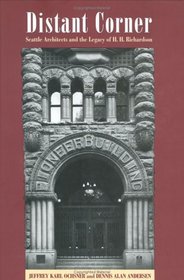Search -
Distant Corner: Seattle Architects and the Legacy of H.H. Richardson
Distant Corner Seattle Architects and the Legacy of HH Richardson
Author:
On the afternoon of 6 June 1889, a fire in a cabinet shop in downtown Seattle spread to destroy more than thirty downtown blocks covering 116 acres. Disaster soon became opportunity as Seattleís citizens turned their full energies to rebuilding: widening and regrading streets, laying new water pipes and sewer lines, promulgating a new building o... more »
Author:
On the afternoon of 6 June 1889, a fire in a cabinet shop in downtown Seattle spread to destroy more than thirty downtown blocks covering 116 acres. Disaster soon became opportunity as Seattleís citizens turned their full energies to rebuilding: widening and regrading streets, laying new water pipes and sewer lines, promulgating a new building o... more »
ISBN-13: 9780295982380
ISBN-10: 0295982381
Pages: 448
Rating: ?
ISBN-10: 0295982381
Pages: 448
Rating: ?
0 stars, based on 0 rating
Publisher: University of Washington Press
Book Type: Hardcover
Members Wishing: 1
Reviews: Amazon | Write a Review
Book Type: Hardcover
Members Wishing: 1
Reviews: Amazon | Write a Review
Genres:
- Engineering & Transportation >> Architecture >> Criticism
- Engineering & Transportation >> Architecture >> Individual Architects & Firms >> Richardson, H.H.
- Engineering & Transportation >> Architecture >> History




